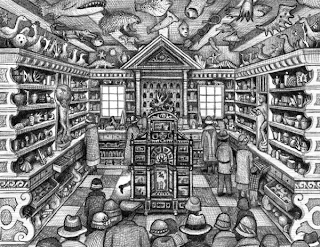Frindle
By: Andrew Clements
Published by Simon and Schuster, 1996
Quirky, Imaginative, Upbeat, Positive Teacher/Student Relationship, Promotes Language & Word Study
Awards:
- 1997 Christopher Award
- Rhode Island Children's Book Award 1998
- Judy Lopez Memorial Honor Book (L.A.)Award 97
- Great Stone Face Book Award (NH)1997-1998
- Rebecca Caudill Young Readers Award (IL)1999
- Massachusetts Children's Book Award 1998-1999
- William Allen White Children's Book Award (KS)1998-1999
- Georgia Children's Book Award, 1998-1999
- 1998-99 Maud Hart Lovelace Award, MN Youth Rdg. Award
- Sasquatch Children's Book Award (WA) 1999
- 1999 South Dakota Prairie Pasque Award
- Charlie May Simon Children's Book Award, (AR)1998-99
- Premio Cassa di Risparmio di Cento di Letteratura per Ragazzi, 1998, Cento, Italy
- 1998-99 Nevada Young Readers'Award
- 1998-99 North Carolina Children's Choice Award
- Pacific NW Lib.Assn.- Young Reader's Choice 1999 (WA,OR,MT,AK,ID,AB,BC)
- 1999 Texas Children's Crown Award
- Young Hoosier Book Award (IN) 1998-99
- 1998-99 Maryland Black-Eyed Susan Book Award, 4-6
- Pennsylvania Young Reader's Choice Award 1999-2000
- Utah Children's Choice Award, 2000
Summary: (Found on the inside flap): Nicholas Allen has plenty of ideas. Who can forget the time he turned his third-grade classroom into a tropical island, or the times he fooled his teacher by chirping like a blackbird? But now Nick's in fifth grade, and it looks like his days as a troublemaker are over.
Everyone knows that Mrs. Granger, the language arts teacher, has X-ray vision, and nobody gets away with anything in her classroom. To make matters worse, she's also a fanatic about the dictionary, which is hopelessly boring to Nick. But when Nick learns an interesting tidbit about words and where they come from, it inspires his greatest plan yet: to invent a new word. From now on, a pen is no longer a pen -- it's a frindle.
Grade Level: Lexile Framework, 830L, Grade Level Equivalent, 4.8
Suggested Delivery: Small Group or Read Aloud
Key Vocabulary: (by page number): monopoly (6), etymological (20), "plays for keeps" (23), oath (38), fad (61), trademark (72)
3 Teaching Suggestions
- Use this text to explore word origins and the dictionary. Explore the different parts of the dictionary - syllables, pronunciation key, etc.
- Use this text to inspire students to be creative and invent their own words for objects they see and use in their everyday lives.
- Use this text to explore the character development of Nick and Mrs. Granger at the beginning of the novel, the middle and at the end of the novel.
Before Reading: Engage students using this scenario or a scenario similar -
Teacher - "Students, will you please take out you koob?" (book)
Repeat this phrase several times until the students understand what the teacher means. Discuss the students reaction to this. Questions to ask - What was your initial reaction? How did you figure out what I meant? What clues did you use to help you understand? Then explain to students that you will be reading a story about a 5th grader who decides to invent his own word for the word pen.
During Reading: Students will keep a running character development chart of the two main characters, Mrs. Granger and Nick. The will explain their character at the beginning of the novel, halfway through the novel and at the end of the novel.
After Reading: Author Andrew Clements writes that Frindle "is about discovering the true nature of words, language, thought, community and learning." Take each of these ideas and discuss how each of these is explored in Frindle. What do students think the true nature of Frindle is?
Writing Activity: Have students invent their own word for a word that already exists and have them write up a plan on how they would spread the use of their new word to others in the school, the state and the country.
3 Electronic Resources:
- Lessons/Activities/Ideas for Teachers: This blog gives teachers a handful of activities to do with this novel prior to reading it, while reading it and after reading it. If teachers are struggling with ideas, this is a great blog to check out.
- Get A Word in the Dictionary: This is a link that will bring students to a website that will explain how a word gets included in a dictionary. It will give them a better understanding of how words are chosen for the dictionary as well. This may inspire students to try and get their own word included in the dictionary.
- FunBrain: FunBrain is a great educational website for kids, teachers and parents. This link will direct students to several word games that they can play. Since the book has such a literal use of words, word activities are only fitting. They can be completed before or after reading the novel.
Clements, A. (1996) Frindle. New York: Simon and Schuster



